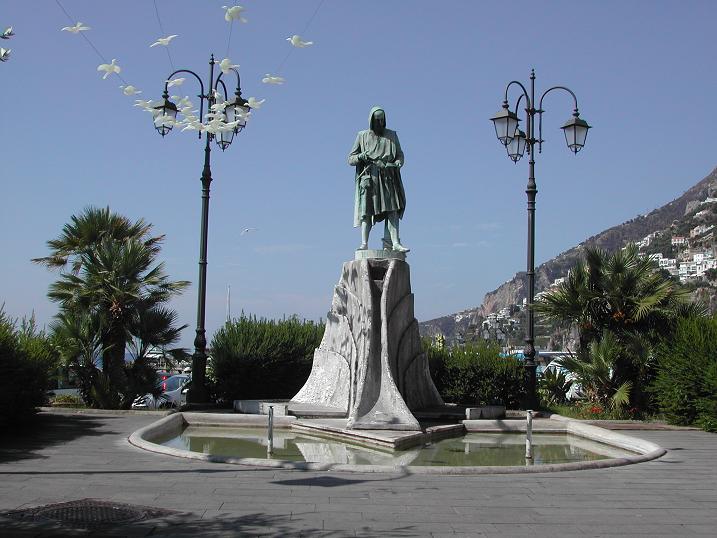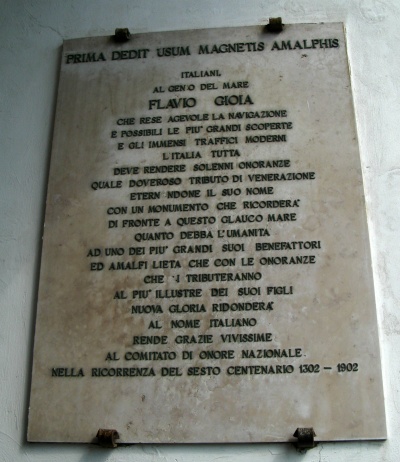A Phantom Inventor: Flavio Gioia October 5, 2012
Author: Beach Combing | in : Medieval, Modern , trackbackWho invented the compass? The Chinese, of course. Sometime between 800 and 1000 that people began to use their lodestones to navigate at sea. But the compass also appears in Europe in the eleventh or twelfth centuries and do we have a case of borrowing (from the far orient, as with playing cards) or independent invention? If you want to argue that Europeans, in fact, invented the compass there is certainly lots of late and unsatisfactory evidence. Enter one of Beach’s favourite examples of historical confusion. About 1450 Flavio Biondo (obit 1463) had a fascinating sentence in his Italia Illustrata.
Fama est qua Amalphitanos audivimus gloriari, magnetis usum, cuius adminiculo navigantes ad arcton diriguntur, Amalfi fuisse inventum, quidquid vero habeat in ea re Veritas, certum est id navigandi auxilium priscis omnino fuisse incognitum.
A loose, early morning translation.
The folk of Amalfi [in Italy] boast that the use of the magnet that sailors use to direct themselves to the north was invented in Amalfi, something that may be true as certainly this sailing aid was unknown to the ancients.
Let’s move on to a second renaissance writer Giovan Battista Pio (obit 1540). In 1511, dear old Giovan Battista wrote a sentence that would muddy the water no end in his In Carum Lucretium poetam Commentarii while dealing with a line of Lucretius.
Amalphi in Campania veteri magnetis usus inventus, a Flavio traditur.
According to Flavio, the use of the magnet was invented in Amalfi in old Campania
The problem was that this could be read another way, particularly if the comma disappears, and soon it was being translated: ‘The use of the magnet was invented in Amalfi in old Campania by Flavio’! The Amalfians had long claimed that they had had the honour of inventing the compass, now they had a name to go with it. With time (about sixty years) this Flavio became Flavio Gioia: Gioia is a locality down the road from Amalfi. And then he was placed in the fourteenth-century, which was unfortunate as that is about two hundred years too late. The good people of Amalfi named a piazza after Flavio Gioia and then built a statue of him in it (see above) and, the greatest compliment in Italy, they named a local high school after their sage and non-existent inventor. There is also a lunar crater that carries his name… And here is a stone celebrating the sixth centenary of his birth (ahem) and below that a commemorative medal: if you ever wanted to know what the face of ‘cobblers’ looked like, you now have an answer.
Beach’s favourite though are these ‘Englishfied’ verses that appear in 1673 and that are ascribed to a Du Bartas (?). Print them out and stick them to your fridges as a reminder of the limitations of human intellect and our limitless human imagination.
We are not to Ceres so much bound for bread,
Neither to Bacchus for his clusters red,
As Signior Flavio to thy witty tryall,
For first inventing of the Sea-mans dyall,
Th’ use of the needle turning in the same,
Divine device, O admirable frame!
Other linguistic phantoms? drbeachcombing AT yahoo DOT com





